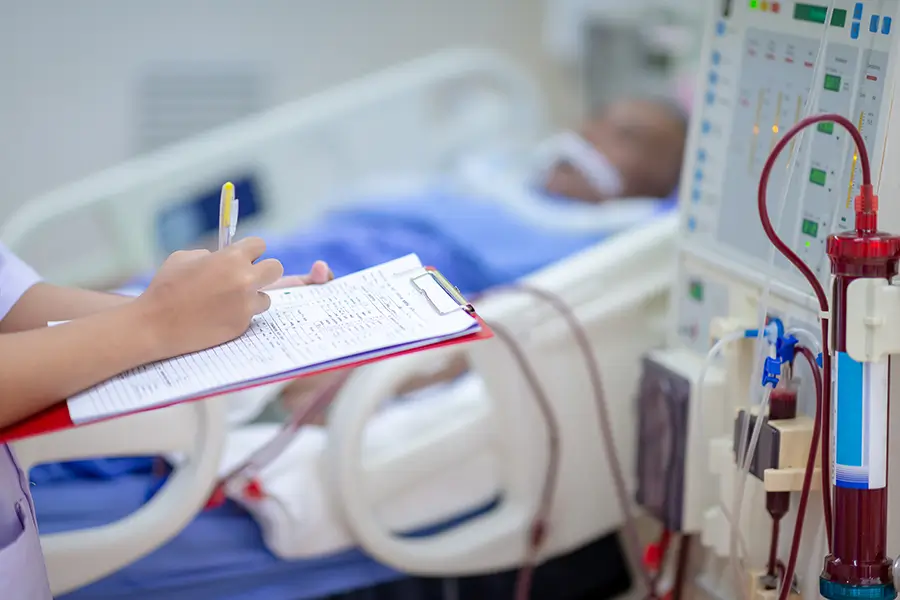What is Renal Hypertension?
Home > What is Renal Hypertension?
Renal hypertension, also known as renovascular hypertension, is a condition characterized by high blood pressure resulting from the narrowing of the arteries that carry blood to the kidneys. This narrowing, known as renal artery stenosis, reduces blood flow to the kidneys, causing them to produce hormones that increase blood pressure. Understanding renal hypertension is essential for managing its symptoms and preventing potential complications.

Consult Your Doctor
Before making any health-related decisions, it is crucial to consult with your healthcare provider. Each individual’s condition is unique, and your doctor can provide personalized advice and treatment options.
Causes of Renal Hypertension
The primary cause of renal hypertension is renal artery stenosis, which can result from:
- Atherosclerosis: The buildup of plaque (fatty deposits) in the arteries, which can lead to significant narrowing or blockage of the renal arteries.
- Fibromuscular Dysplasia: A condition where the muscle and fibrous tissue of the artery wall grow abnormally, leading to narrowing of the arteries. This condition is more common in women and may be influenced by genetic factors.
Other less common causes include congenital abnormalities of the renal arteries, inflammatory diseases, and trauma to the kidneys or surrounding vessels.
Symptoms of Renal Hypertension
Renal hypertension often goes unnoticed until it becomes severe because it typically does not cause symptoms in its early stages. However, as the condition progresses, it may lead to:
- Persistent high blood pressure that is difficult to control with standard medications.
- Reduced kidney function, which can manifest as fatigue, difficulty concentrating, and decreased urine output.
- Fluid retention, leading to swelling in the legs, ankles, or feet (edema).
- Headaches and visual disturbances due to high blood pressure.
- Unexplained weight loss and appetite changes.
Diagnosis of Renal Hypertension
Diagnosing renal hypertension involves a combination of physical exams, imaging tests, and blood tests:
- Physical Exam: A healthcare provider may listen for a whooshing sound (bruit) in the abdomen, which can indicate turbulent blood flow through a narrowed artery.
- Blood and Urine Tests: These tests can reveal how well the kidneys are functioning and check for signs of kidney damage.
- Imaging Tests: Various imaging techniques can visualize the renal arteries and assess blood flow:
- Duplex Ultrasound: Uses sound waves to create images and measure blood flow in the renal arteries.
- Computed Tomography Angiography (CTA): Combines X-rays and computer technology to create detailed images of the blood vessels.
- Magnetic Resonance Angiography (MRA): Uses a magnetic field and contrast dye to visualize blood flow in the arteries.
- Catheter Angiogram: Involves inserting a catheter into the artery to inject contrast dye and take detailed X-ray images.
Treatment Options for Renal Hypertension
The treatment of renal hypertension aims to control blood pressure, improve blood flow to the kidneys, and prevent complications. Treatment options include:
- Medications: Blood pressure medications are typically the first line of treatment. Commonly prescribed drugs include:
- Angiotensin-Converting Enzyme (ACE) Inhibitors and Angiotensin Receptor Blockers (ARBs): These medications help relax blood vessels and reduce blood pressure.
- Diuretics: Help the kidneys remove excess fluid from the body, reducing blood pressure.
- Beta-Blockers and Calcium Channel Blockers: Reduce the heart rate and relax blood vessels to lower blood pressure.
- Lifestyle Changes: Making healthy lifestyle changes can significantly impact blood pressure management:
- Healthy Diet: Low in sodium, cholesterol, and saturated fats.
- Regular Exercise: Helps maintain a healthy weight and reduces blood pressure.
- Smoking Cessation: Smoking can worsen blood pressure and artery health.
- Stress Management: Techniques such as meditation and yoga can help reduce stress levels.
- Procedures and Surgery: In cases where medication and lifestyle changes are not sufficient, medical procedures may be necessary:
- Angioplasty with Stenting: A minimally invasive procedure where a small balloon is used to open the narrowed artery, and a stent is placed to keep it open.
- Renal Artery Bypass Surgery: Involves creating a new pathway for blood to reach the kidney by bypassing the narrowed artery.
- Renal Endarterectomy: Removal of plaque from the inner lining of the renal artery.
Complications of Renal Hypertension
If left untreated, renal hypertension can lead to several serious complications, including:
- Chronic Kidney Disease (CKD): Reduced blood flow can damage the kidneys over time, leading to CKD.
- Heart Disease: High blood pressure can increase the risk of heart attack, heart failure, and stroke.
- Kidney Failure: Severe cases can lead to kidney failure, requiring dialysis or a kidney transplant.
- Peripheral Artery Disease (PAD): Narrowing of other arteries in the body, leading to reduced blood flow to the limbs.
Renal hypertension is a serious condition that requires careful management and regular monitoring. By understanding the causes, symptoms, and treatment options, individuals can take proactive steps to manage their blood pressure and protect their kidney health. Always consult with your healthcare provider for personalized advice and treatment plans. For more information on managing renal hypertension, visit reputable medical sources and speak with a specialist.
Get the word out
For further resources and personalized advice on managing renal hypertension, subscribe to our blog and consult with our healthcare experts. Share this article with friends and family who may benefit from understanding this condition. Together, we can promote better health and well-being.
Contact us for more info.
